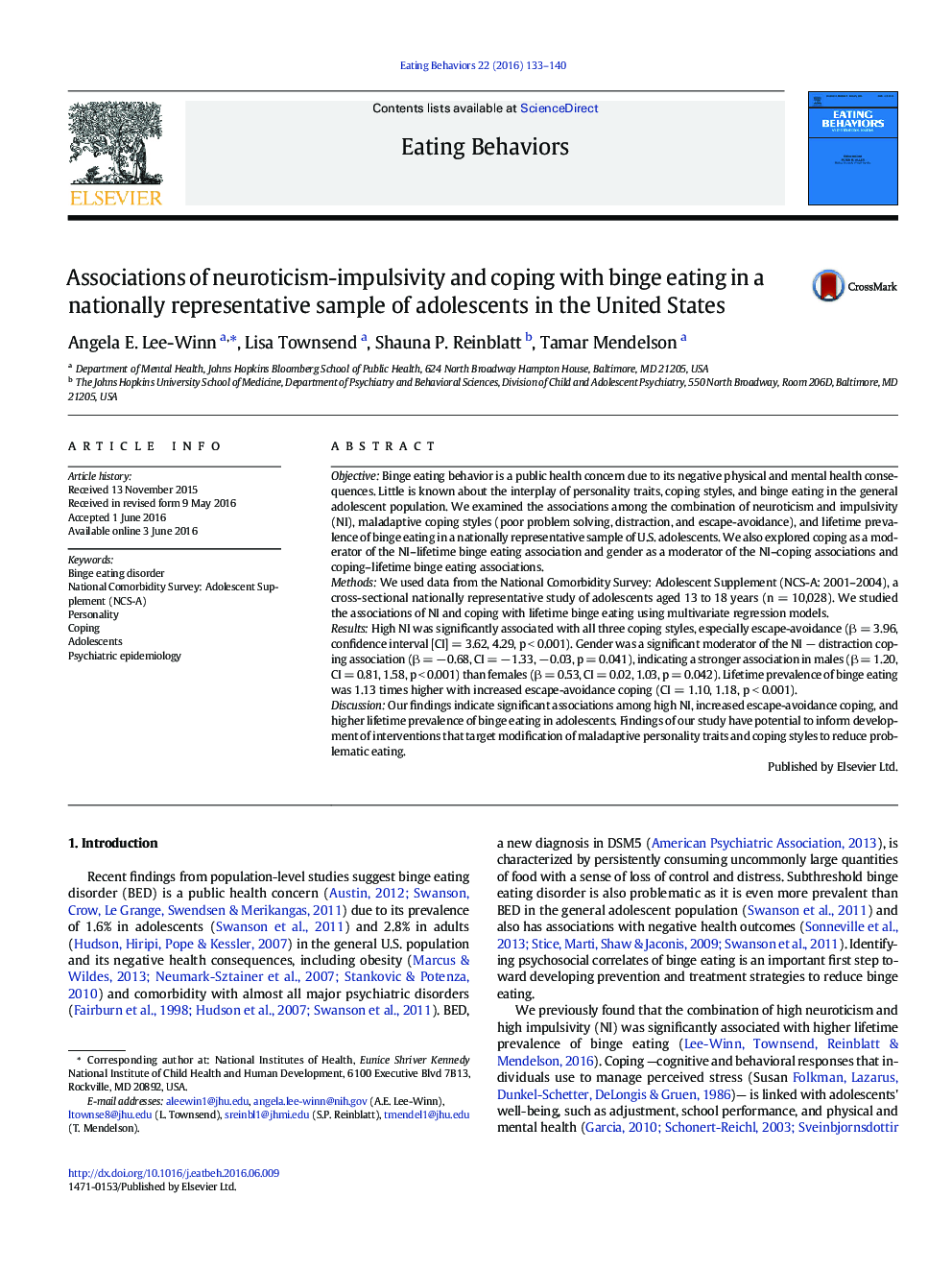| کد مقاله | کد نشریه | سال انتشار | مقاله انگلیسی | نسخه تمام متن |
|---|---|---|---|---|
| 906204 | 1472881 | 2016 | 8 صفحه PDF | دانلود رایگان |
• Females reported higher neuroticism-impulsivity (NI) and more escape-avoidance coping.
• Males reported using less problem solving and more distraction coping than females.
• Adolescents with high NI reported to use more maladaptive coping styles.
• The NI-distraction coping association was stronger in males than females.
• Escape-avoidance coping was associated with higher lifetime prevalence of binge eating.
ObjectiveBinge eating behavior is a public health concern due to its negative physical and mental health consequences. Little is known about the interplay of personality traits, coping styles, and binge eating in the general adolescent population. We examined the associations among the combination of neuroticism and impulsivity (NI), maladaptive coping styles (poor problem solving, distraction, and escape-avoidance), and lifetime prevalence of binge eating in a nationally representative sample of U.S. adolescents. We also explored coping as a moderator of the NI–lifetime binge eating association and gender as a moderator of the NI–coping associations and coping–lifetime binge eating associations.MethodsWe used data from the National Comorbidity Survey: Adolescent Supplement (NCS-A: 2001–2004), a cross-sectional nationally representative study of adolescents aged 13 to 18 years (n = 10,028). We studied the associations of NI and coping with lifetime binge eating using multivariate regression models.ResultsHigh NI was significantly associated with all three coping styles, especially escape-avoidance (β = 3.96, confidence interval [CI] = 3.62, 4.29, p < 0.001). Gender was a significant moderator of the NI − distraction coping association (β = − 0.68, CI = − 1.33, − 0.03, p = 0.041), indicating a stronger association in males (β = 1.20, CI = 0.81, 1.58, p < 0.001) than females (β = 0.53, CI = 0.02, 1.03, p = 0.042). Lifetime prevalence of binge eating was 1.13 times higher with increased escape-avoidance coping (CI = 1.10, 1.18, p < 0.001).DiscussionOur findings indicate significant associations among high NI, increased escape-avoidance coping, and higher lifetime prevalence of binge eating in adolescents. Findings of our study have potential to inform development of interventions that target modification of maladaptive personality traits and coping styles to reduce problematic eating.
Journal: Eating Behaviors - Volume 22, August 2016, Pages 133–140
